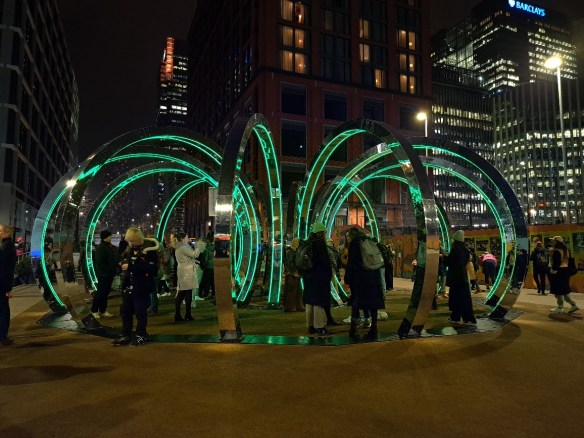What would London be like if development was allowed to proceed without planning restrictions for old buildings? Large areas of London are protected against development because of population density limits, restrictions on views and of course preservation of old buildings. This preserves the historic buildings and neighbourhoods but has the side effect of limiting growth. It keeps the city more low-rise and gives parts of London a grimy, run-down, aged feel. Some areas are charming and historic, other parts, look like they need a good scrub and a facelift (and before London cleaned up it’s act, it used to be a lot dirtier!). Prince Charles successfully advocated for many years that no other buildings could exceed the height of St Paul’s cathedral – which meant some of the most valuable commercial real estate in the UK (the city of London – sometimes called the square mile) could only be built to an amazingly low density. Going to the Docklands area of Canary Wharf is an insight into what London might look like if large scale development was possible.
The Docklands area was once a thriving area by the Thames River for port activities, merchants, industry, warehousing and engineering. Due to the criticality of this area for London, it was the target of severe bombing during the second World War. After the war, it struggled to rebuild as the area was not suitable for larger modern container ships. In the 90s, after a lot of feet-dragging by the government, the area was finally transformed and re-emerged as an area for business. Large corporations (particularly banks) established their offices there. Tall office and residential buildings sprung up and this area become a posh, gentrified part of town.
Now, Canary Wharf is a modern, skyscraper filled central business district of shiny glass and steel. People live in the residential buildings in modern new-build, albeit expensive, apartments. The modernity of Canary Wharf is a massive contrast to other areas of London, so much so that it has something of the feel of an American city about it. Canary Wharf is also trying to become an entertainment and dining precinct. Many famous restaurant franchises have already opened a branch in this area. It’s also very well connected with a number of different commuter trains lines running through it including the recently completed (but wholy un-originally named) Elizabeth Line.
We recently visited the Canary Wharf areas to see their free Winter Lights event. Interesting and artistic light displays were set-up in a circuit around the main area. This free event has been very well attended and there were crowds of people walking from one exhibit to another. This free, public event is quite a smart tactic to draw people into a predominantly business district after dark – in the freezing cold depths of winter. Many of these people will duck into the warmth of a restaurant or shop at some point during their Winter Lights walk. Others may be drawn to Canary Wharf for the first time by this event and be struck by the modernity, the entertainment, the restaurants and other amenities available!










